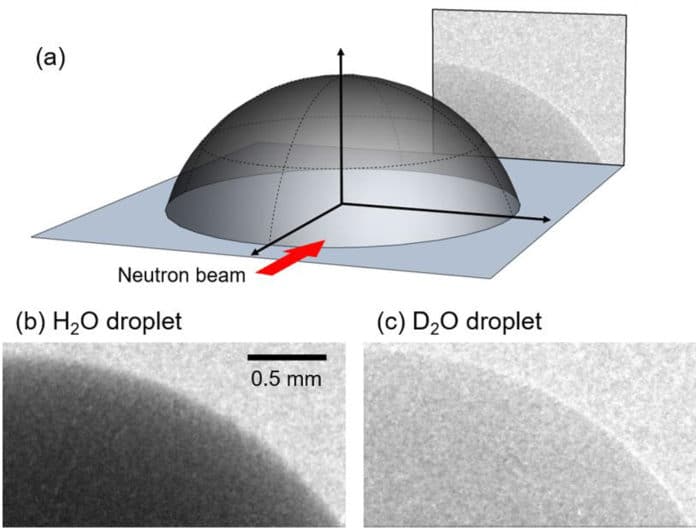The demand for high-resolution neutron imaging has been steadily increasing over the past years. It is a non-destructive investigation technique that can probe the inner structure of bulk objects. Over the years, neutron imaging has developed from a qualitative testing technique to a scientific tool with applications in numerous and diverse fields.
Recently, scientists at UNIST used the same technique to observe the kinetics of water vapor into a sessile water droplet. They observed the evaporation of a 7.7 μL sessile droplet while absorbing ambient H2O vapor under ambient conditions.
Scientists performed a neutron transmittance analysis of a heavy sessile water (D2O) droplet. Later, they measured the fraction change of H2O to D2O by the sorption of ambient H2O vapor during the evaporation.
Scientists noted, “The ex-situ Fourier-transform infrared (FTIR) spectroscopy results and their diffusion-based numerical model of an evaporating multi-component droplet supported their experimental observations using neutrons.”
The results suggest that high-resolution neutron imaging can trace changes in nonequilibrium phenomena like evaporation and condensation.
Scientists noted, “Our work is a proof of concept that high-resolution neutron imaging can reveal how the distribution of a component of interest changes in nonequilibrium phenomena with multiple components involved, such as the evaporation and condensation of a sessile droplet of a liquid mixture, e.g., water and ethanol.”
“Neutron imaging can provide key information to understand the complex phenomena by tracing a crucial deuterated component, the physicochemical properties of a deuterated chemical are often compared with its hydrogenated counterpart.”
Journal Reference:
- Jae Kwan Im, Leekyo Jeong, Jan Crha, et al., “High-resolution neutron imaging reveals kinetics of water vapor uptake into a sessile water droplet,” Matter, (2021). DOI: 10.1016/j.matt.2021.04.013
